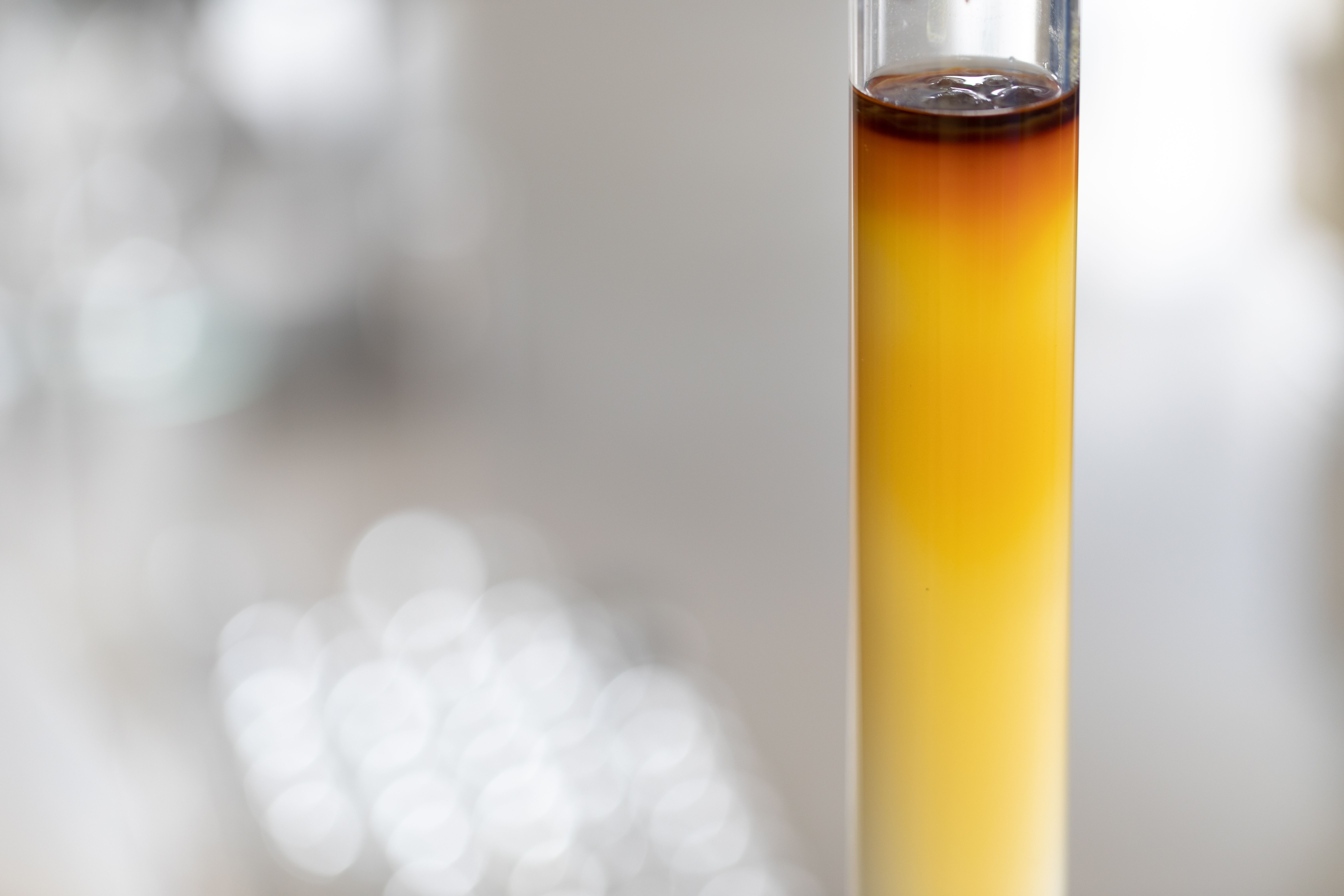Understanding Nonadditivity and Nonlinearity in Chromatography Mass Transfer Resistances
Researchers from Vrije Universiteit Brussel and Sapienza Università di Roma shed light on the characteristics of mass transfer paths in liquid chromatography.
The precision of separations achieved through liquid chromatography (LC) has far-reaching implications in analytical chemistry. LC is crucial for multiple applications, from drug development to food product analysis. A recent study conducted by Bram Huygens and Gert Desmet, of Vrije Universiteit Brussel in Brussels, Belgium, and Claudia Venditti and Alessandra Adrover, of Sapienza Università di Roma in Rome, Italy, delves into the intricacies of mass transfer resistances in chromatography (1). The goal of the researchers' work was to uncover nonadditivity and nonlinearity in mobile and stationary zone mass transfer resistances, providing any significant possible insights into the field.
Column chromatography chemistry in the lab. | Image Credit: © sinhyu - stock.adobe.com

Nonadditivity in mass transfer resistances in chromatography refers to the situation where the combined effect of mobile and stationary phase resistances is not simply the sum of their individual contributions. Instead, interactions between the phases can lead to complex and nonlinear effects, resulting in deviations from the expected linear behavior, which can impact the efficiency and selectivity of chromatographic separations.
The study, published in Analytical Chemistry, employed a two-zone moment analysis (TZMA) method based on Brenner's generalized dispersion theory for two-dimensional (2D) and three-dimensional (3D) periodic media. This analytical approach allowed for a comprehensive investigation of the mechanisms responsible for dispersion in particulate media during liquid chromatography. The dataset the researchers gathered covered a wide range of retention factors, diffusion coefficients, and velocities, with a notable emphasis on computational accuracy.
One fundamental concept in chromatography is additivity, a principle rooted in the assumption that the dispersion effects in both the mobile and stationary phases are independent and can be summed up to predict the overall chromatographic performance. To evaluate this assumption, the researchers applied Giddings' additivity test, wherein they alternated between making the diffusion coefficient in the mobile and stationary zones infinitely large. Surprisingly, the data clearly indicated a lack of additivity, challenging the traditional notion that these processes are independent.
The origin of this lack of additivity is of particular interest. The study identified the existence of multiple parallel mass transfer paths as the key contributor to the observed nonadditivity. When such parallel paths are present, the additivity assumption overestimates the true band broadening, often by more than 10%, depending on the specific conditions and dimensionality of the system. This revelation stands in contrast to Giddings' original assertion that parallel paths would lead to an underestimation of dispersion. This nonadditivity phenomenon, therefore, represents a critical nuance in chromatographic science.
The researchers delved further into the intricacies of nonadditivity, providing a detailed and qualitative explanation of its origin. This in-depth analysis enhances our understanding of the underlying processes governing chromatographic separations.
Moreover, the study introduces a generic framework for modeling the effect of reduced velocity and retention coefficient on the C term in ordered chromatographic media. This framework offers a more comprehensive expression for the mobile zone mass transfer term in the realm of chromatography modeling. In contrast to the existing literature, the new model incorporates the complete k″ (k double prime) dependency, providing a more accurate and holistic representation of the mass transfer resistance in the mobile phase.
In conclusion, this study offers a novel perspective on mass transfer resistances in chromatography. By uncovering the nonadditivity and nonlinearity in mobile and stationary zone processes, the researchers’ work challenges conventional assumptions and provides a foundation for more accurate modeling in the field. This research figures to contribute to the advancement of LC and its applications in various industries, from pharmaceuticals to food science, ensuring greater reliability of analytical chromatographic separations in the future.
This article was written with the help of artificial intelligence and has been edited to ensure accuracy and clarity. You can read more about our policy for using AI here.
Reference
(1) Huygens, B.; Venditti, C.; Adrover, A.; Desmet, G. Nonadditivity and Nonlinearity of Mobile and Stationary Zone Mass Transfer Resistances in Chromatography. Anal. Chem. 2023, 95 (41), 15199–15207. DOI: 10.1021/acs.analchem.3c01971
Characterizing Polyamides Using Reversed-Phase Liquid Chromatography
May 5th 2025Polyamides can be difficult to characterize, despite their use in various aspects of everyday life. Vrije Universiteit Amsterdam researchers hoped to address this using a reversed-phase liquid chromatography (RPLC)-based approach.
New Method Explored for the Detection of CECs in Crops Irrigated with Contaminated Water
April 30th 2025This new study presents a validated QuEChERS–LC-MS/MS method for detecting eight persistent, mobile, and toxic substances in escarole, tomatoes, and tomato leaves irrigated with contaminated water.
University of Tasmania Researchers Explore Haloacetic Acid Determiniation in Water with capLC–MS
April 29th 2025Haloacetic acid detection has become important when analyzing drinking and swimming pool water. University of Tasmania researchers have begun applying capillary liquid chromatography as a means of detecting these substances.
Prioritizing Non-Target Screening in LC–HRMS Environmental Sample Analysis
April 28th 2025When analyzing samples using liquid chromatography–high-resolution mass spectrometry, there are various ways the processes can be improved. Researchers created new methods for prioritizing these strategies.

.png&w=3840&q=75)

.png&w=3840&q=75)



.png&w=3840&q=75)



.png&w=3840&q=75)






